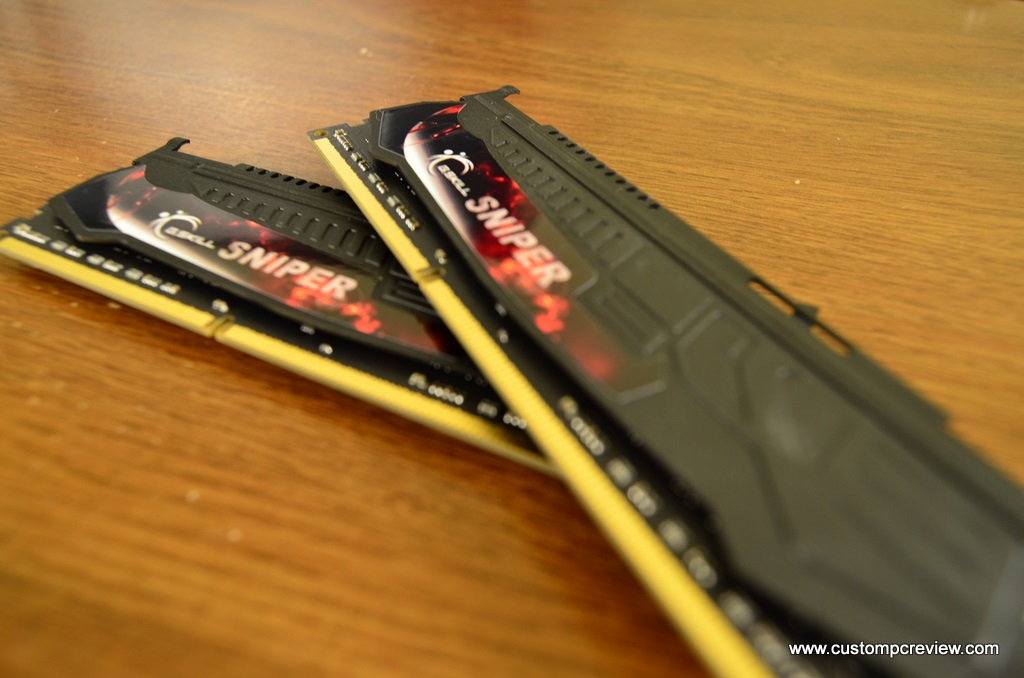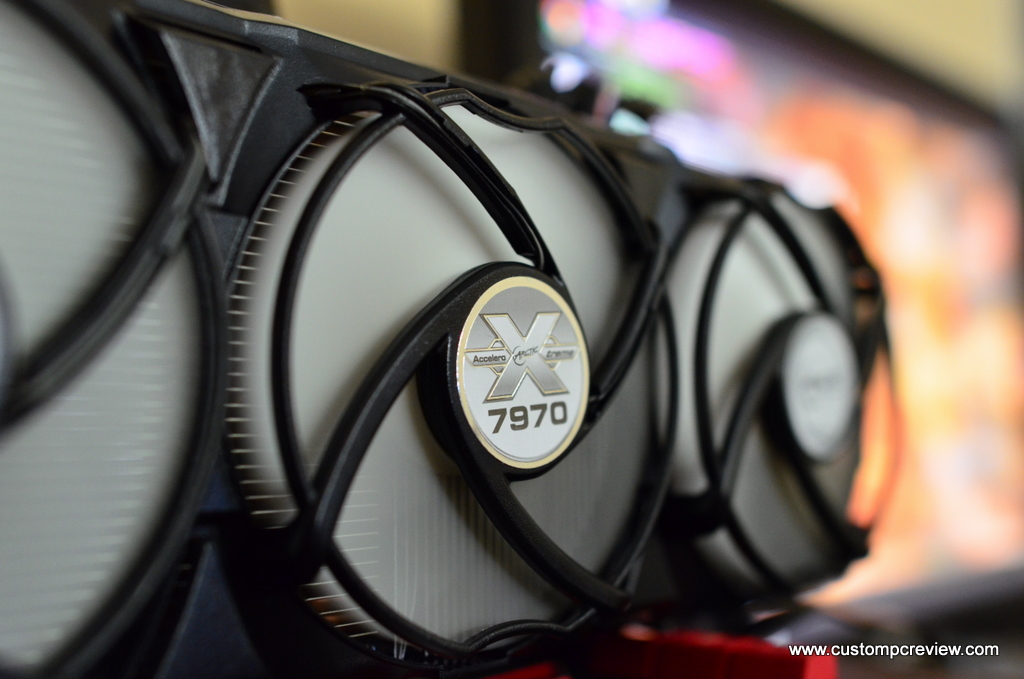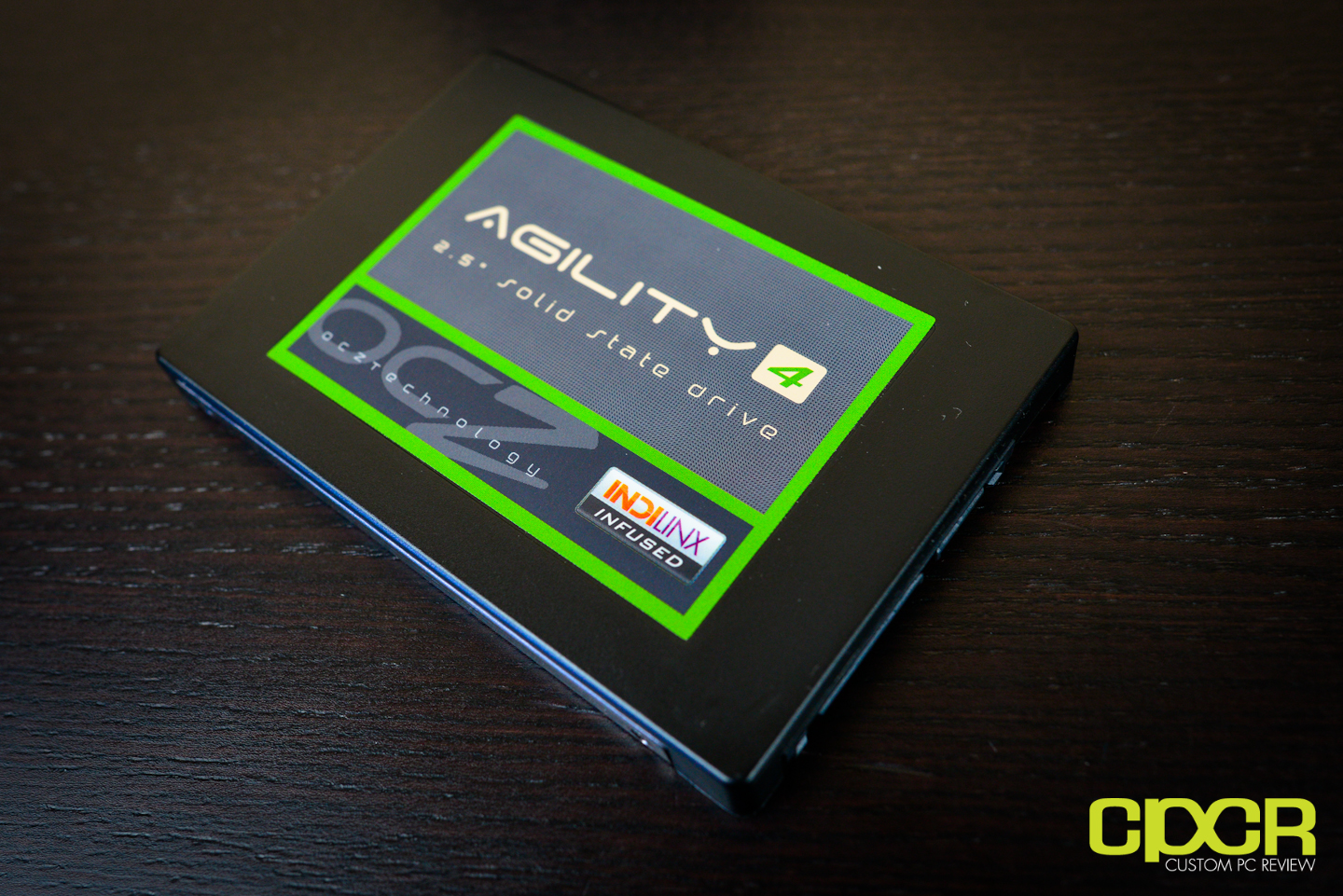[section label=1. Introduction]
SanDisk Gets Just a Bit More Extreme
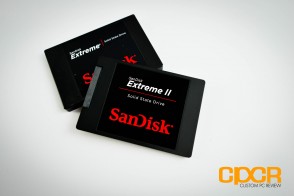 Despite being one of the lucky few who own their own NAND fab and their own controller technology (albeit slow and outdated), when it comes to SSDs SanDisk isn’t usually a name you’d hear too often. While SanDisk has been in the SSD game for a very, very long time, most of their business is conducted with OEMs and SI’s with SanDisk generally supplying their SSDs in off the shelf ultraportable notebooks and Ultrabooks.
Despite being one of the lucky few who own their own NAND fab and their own controller technology (albeit slow and outdated), when it comes to SSDs SanDisk isn’t usually a name you’d hear too often. While SanDisk has been in the SSD game for a very, very long time, most of their business is conducted with OEMs and SI’s with SanDisk generally supplying their SSDs in off the shelf ultraportable notebooks and Ultrabooks.
Prior to the Extreme II, SanDisk really hasn’t done very much in the consumer space. In early 2012, they released the original Extreme, which was a decent product, but it was built with the completely off the shelf SandForce SF-2281 controller packaged with a pretty much the vanilla SandForce firmware. Considering the fact that any OEM out there looking to put together a SSD can do the exact same thing, it didn’t make much sense given the fact that SanDisk has such extensive knowledge in controller technology and firmware design. They simply had the resources and the technical ability to do so much more…
SanDisk Extreme II Specifications
| Manufacturer | SanDisk | SanDisk | SanDisk |
|---|---|---|---|
| Model | Extreme II | Extreme II | Extreme II |
| Capacity | 120 GB | 240 GB | 480 GB |
| Controller | Marvell 88SS9187 | Marvell 88SS9187 | Marvell 88SS9187 |
| NAND | 19nm SanDisk eX2 ABL MLC Toggle NAND, 3K P/E | 19nm SanDisk eX2 ABL MLC Toggle NAND, 3K P/E | 19nm SanDisk eX2 ABL MLC Toggle NAND, 3K P/E |
| Sequential Reads | 550 MB/s | 550 MB/s | 545 MB/s |
| Sequential Writes | 340 MB/s | 510 MB/s | 500 MB/s |
| Interface | SATA 3 6GB/s | SATA 3 6GB/s | SATA 3 6GB/s |
| Warranty | 5 Years | 5 Years | 5 Years |
This is why today we’ll be reviewing the SanDisk Extreme II 240GB, which is SanDisk’s latest high performance SSD offering for the consumer market. Like a number of other SSDs on the market, the Extreme II will come in capacities of 120GB, 240GB, and 480GB. Looking at the capacities, you’re probably thinking “Oh, no! Another vanilla SandForce drive!”, but it’s actually not. The Extreme II is instead using Marvell’s 88SS9187 along with some of SanDisk’s own custom firmware and their exclusive 19nm eX2 ABL MLC Toggle NAND. The loss of ~7% usable capacity is actually due to SanDisk’s nCache technology which we’ll be getting into a bit later.
This move of course makes sense for SanDisk since SandForce, with the exception of Intel’s SSDs, doesn’t allow for custom firmware implementations. This would make a SandForce controlled Extreme II pretty much a boring clone of the original Extreme merely carrying NAND of a finer lithography. On the other hand, SanDisk’s own controller simply doesn’t seem up to snuff compared to the latest controllers on the market, which is why a move towards Marvell’s controllers seemed like a logical step. This allows SanDisk to leverage their knowledge in SSD controller and firmware design to produce a SSD with their own performance characteristics in mind. Interestingly enough, it’s also the same route OCZ took with the Indilinx Everest series of controllers, so I wouldn’t say it’s impossible to expect something with a high performance SanDisk controller down the line. Only time will tell…
With that said, let’s take a closer look at the Extreme II.
[section label=2. A Closer Look (Exterior)]
A Closer Look at the SanDisk Extreme II 240GB
Here’s a look at the packaging for the SanDisk Extreme II 240GB. The packaging is in the usual SanDisk theme across pretty much all their product lines.
Included in the packaging we get a couple accessories along with the SanDisk Extreme II SSD itself. Accessories include a 2mm riser to allow the 7mm SSD to be installed into a 9mm SSD enclosure such as that found in a larger notebook and some documentation.
Here’s a close look at the SanDisk Extreme II unit itself. It’s actually quite similar to the original SanDisk Extreme except the new model is labeled Extreme II rather than just Extreme. The bottom of the Extreme II includes a label that includes all the relevant information about the SSD.
At its usual spot, we get the SATA 6Gb/s port along with the SATA power port as well. In order to take full advantage of the SanDisk Extreme II, you must connect the SSD to a SATA 6Gb/s port. The SanDisk Exteme II, unlike the original SanDisk Extreme, comes in a 7mm formfactor rather than the original’s 9mm formfactor. This will allow the Extreme II to be installed in thin and light notebooks/Ultrabooks that only have a 7mm drive cage.
[section label=3. A Closer Look (Interior)]
A Closer Look at the SanDisk Extreme II 240GB
Cracking open the SanDisk Extreme II isn’t too difficult as SanDisk uses four standard Phillips head screws to secure the unit. The screws are located underneath the specifications label on the bottom of the unit, so opening up the SSD will result in a voided warranty. Taking a quick glance at the PCB, SanDisk is using a full sized PCB and has opted to populate only the top with a total of 8 NAND packages, the controller and a DRAM cache. There are no ICs worth mention on the bottom. In order to facilitate heat dissipation, SanDisk has also included thermal material to cover each of the NAND packages, the controller, and the DRAM.
Here’s a closer look at the SSD controller. SanDisk selected the Marvell 88SS9187-BLD2 (aka Monet) controller, which is Marvell’s high performance successor to the highly successful Marvell 88SS9174 (aka Van Gogh) controller.
Here’s a look at the block diagram for the Marvell 88SS9187. The controller is powered by a dual core Marvell 88FR102 V5 CPU and supports up to 8 channels (200MB/s per channel) of ONFI 2.0 NAND or Toggle Mode NAND (Up to Mode 5). For caching, the 88SS9187 is capable of accepting up to 1GB of DDR2/3-800. The controller itself also supports advanced ECC algorithms as well as AES 256-bit encryption, which of course is dependent on each individual vendor if they want to implement. Unfortunately, AES encryption is not available on the Extreme II and there has been no mention of future firmware updates to support the feature.
Here’s a closer look at the NAND onboard the Extreme II. SanDisk is using 8 packages (32GB each) of exclusive house brand (SanDisk) 19nm ex2 ABL 3K P/E cycle MLC Toggle Mode NAND (Part #05226032G).
What’s special about the SanDisk Extreme II and the new NAND that goes with it is that it supports nCache technology. nCache takes some of the MLC NAND across all NAND dies and converts it to work as a non-volatile cache in SLC mode. By doing this, nCache gets access to all 8 channels of the controller. In the diagram above, we can get a rough idea of how nCache works. Basically, nCache sits between the DRAM cache and the main MLC NAND storage. As small random writes occur, the writes go directly from the DRAM cache into the faster SLC nCache rather than the slower main MLC NAND storage. As the nCache fills up or the drive goes idle, the data then gets flushed into the main MLC NAND storage. According to SanDisk, nCache should boost random write performance and improve drive durability by reducing write amplification on the main MLC NAND storage.
For the DRAM cache, SanDisk has sourced 256MB of Samsung DDR3 1600MHz (Model #K4B2G1646E-BCK0). With the exception of SandForce drives which don’t use a DRAM cache at all, we generally like to see 1MB of DRAM cache per 1GB of NAND, so SanDisk is right on the money here. While we don’t have the 120GB or 480GB Extreme II models on hand, the 120GB model is likely sporting 128MB of DRAM cache while the 480GB is sporting 512MB of DRAM cache.
[section label=4. Test Setup]
Haswell Test Bench
As of October 13, 2013, we’ve upgraded our storage testing system to a Z87/Haswell testing platform. All SSDs used for comparison here have been updated to the latest firmware as of October 2013. Performance tests from storage reviews prior to that date should not be compared to our latest reviews.
| System | CyberPowerPC Gamer Xtreme 4200 |
|---|---|
| CPU | Intel Core i7 4770K |
| Motherboard | ASUS Z87-A |
| Memory | Kingston HyperX Genesis 16GB DDR3 2133MHz |
| Graphics | Intel HD4600 Graphics |
| Storage | OCZ Vertex 4 256GB |
| Power Supply | Corsair HX650 |
| Case | HSPC High Speed Tech Station |
| Optical Drive | ASUS OEM DVD Drive |
| Operating System | Windows 8 64 bit & CentOS 6.4 |
Special thanks to CyberPowerPC, Kingston, OCZ Technology and HSPC for sponsoring our test bench!
Crystal Disk Info
SanDisk Extreme II 240GB
[section label=5. ATTO Disk Benchmark / Crystal Disk Mark]
SanDisk Extreme II 240GB Performance
ATTO Disk Benchmark v2.46
ATTO Disk Benchmark is one of the industry’s oldest and most popular benchmarks for testing disk read/write speeds. This benchmarks allows read and write testing using predefined block sizes and gives us a good idea of read/write speeds with different sized files. Most SSD manufacturers these days prefer using this benchmark when advertising SSDs as it tests using compressible data, which tends to yield better performance.
Performance Analysis
As usual, we kick off our testing with ATTO Disk Benchmark and the SanDisk Extreme II 240GB performs extremely well here pushing a maximum of 549MB/s sequential reads and 517MB/s sequential writes. This is very much in line with the advertised 550MB/s sequential reads and 510MB/s sequential writes. We’re off to a good start, let’s move on.
Crystal Disk Mark 3.0.1 x64
Crystal Disk Mark is another popular benchmark which allows us to measure both sequential read/write speeds as well as random read/write speeds. With this benchmark, tests can be run using both random fill (incompressible data) and 0 fill (compressible data). Realistically in typical computer usage scenarios, data being transferred will consist of a mixture of both incompressible and compressible data.
Performance Analysis
Moving onto Crystal Disk Mark, we can see that the Extreme II, unlike the original Extreme, does not gain or lose performance based on the entropy of data being used. This is due to the switch to the Marvell 88SS9187 controller from the SandForce SF-2281. Taking a look at the rest of the performance figures, the Extreme II is fairly quick, but doesn’t break any performance records.
[section label=6. PC Mark 7 / PC Mark 8]
SanDisk Extreme II 240GB Performance
PC Mark 7
The PC Mark 7 storage test tests the SSD under many different real world tests such as gaming, video editing, etc. This is most representative of the SSD’s performance under real world situations.
PC Mark 8
The PC Mark 8 storage test is extremely similar to storage test found in PC Mark 7. The PC Mark 8 storage test tests SSDs under many real world applications such as gaming, video editing, photo editing, etc.
Performance Analysis
In both our PC Mark 7 and PC Mark 8 testing, the SanDisk Extreme II 240GB performs very well, sitting at the middle of the pack in our list of the highest performing SSDs on the market.
[section label=”7. FIO – FOB”]
SanDisk Extreme II 240GB Performance
FIO (Flexible I/O Tester)
FIO, which stands for Flexible I/O Tester, is basically what its name says – a flexible I/O tester / I/O workload generator. Whereas all the benchmarking tools we’ve used previously are fantastic, easy to use benchmarking tools that provide a good snapshot of SSD performance, they do lack a lot of versatility, especially for more complex and in-depth operations such as custom queue depths, block sizes, test run times, etc. While the testing that follows may not pertain to typical client usage, they do help give us a much more in-depth look at each individual product’s strengths and weaknesses when they’re pushed to the limits.
FIO – FOB (Fresh Out of the Box) Testing
When SSDs are brand new and Fresh Out of the Box, they’re generally able to perform at or outperform their advertised speeds, but unlike traditional hard drives, performance on SSDs begin to degrade over time as they become more and more used. This is because while SSDs are new, all bits on the SSD are empty, so they can instantly be programmed with data. However, once data gets programmed in, even if it’s deleted in the filesystem the actual data will still stay programmed on the NAND itself unless some sort of garbage collection routine comes in to wipe the data. Unfortunately, in order to write new data onto “dirty” NAND, the NAND needs to go first through an erase cycle to erase the old data before a program cycle can happen to program new data, which as you may imagine takes more time than just a simple program cycle. As this only happens when writing new data onto the SSD, you’ll generally see less performance degradation on reads and more performance degradation on writes.
For our FOB testing, we run a secure erase on the SSD then run each test sans any preconditioning. This will provide us with the highest level of performance the SSD is capable of and is likely never to be seen ever again once the SSD goes into a used state.
Our testing will include 4K read testing, 4K write testing, and 4K 70/30 read/write mix testing at queue depths of 1,2,4,8,16,32,64,128,256. The reason we’ve also included 4K 70/30 read/write mix testing is simply because most real world workloads will always fall somewhere between 0% write and 100% write rather than one or the other. Since client usage is much more read heavy, we’ll be using the 70/30 read/write mix.
For general client usage, performance will fall somewhere between queue depths of 1-4 whereas servers and other enterprise applications will easily see queue depths of 32 or greater.
Performance Analysis
It’s quite obvious here that SanDisk has optimized the Extreme II for read intensive workloads as the drive’s 4K read performance tops out at 99,460 IOPS, a mere 540 IOPS short of the coveted 100,000 IOPS mark. Unfortunately, 4K write performance doesn’t come anywhere near 4K read performance, settling at just under 30,000 IOPS in our testing. That said, it does maintain very consistent performance throughout all queue depths tested today.
[section label=”8. FIO – Steady State”]
FIO – Steady State Testing
After enough use on a SSD, SSDs will generally end up in what’s called steady state. Whereas the FOB state is the “best case scenario” for SSD performance, steady state is going to be your worst. Here we’ll be running the exact same set of benchmarks we just completed in the FOB state, except this time around we’ll be preconditioning the drive by filling 100% of the drive’s LBAs with two sequential passes of 128k data followed by a full 6 hours of hammering the drive with two full passes of random 4K data.
Performance Analysis
Once the SanDisk Extreme II enters the ultra punishing steady state with zero spare area, 4K random read performance takes quite a significant dump in comparison to the more read optimized drives on the market such as the Samsung 840 Pro or the OCZ Vector. While 4K reads suffer in performance, the Marvell controller in the SanDisk Extreme II does quite well for 4K random writes beating out both the Samsung drives and the OCZ drives. That said, SandForce with its aggressive over-provisioning still takes the top spot in our comparison charts in steady state 4K write performance.
[section label=”9. FIO – Consistency”]
FIO Consistency Testing
Another one of the benefits of testing with FIO is that we also get the flexibility of running consistency testing, which is something we think is going to be one of the most important metrics when considering SSDs going forward. Looking at results from benchmarks such as ATTO Disk Benchmark and Crystal Disk Benchmark, we can see that practically every top tier SSD is capable of rocking SATA 6Gb/s saturating reads and writes. However, what really differentiates these SSDs is the ability to hold a certain level of performance even after extended periods of use.
For our consistency testing, we’ll be using a fairly standard method, which includes filling all LBAs twice over with sequential 128k data followed by the actual test itself, which is simply running 4K random writes at a queue depth of 32. By recording the IOPS every second for 2,000 seconds, we’re able to get a good look at what kind of performance can be expected when the drive is relatively new, when it’s heading towards steady state, and when it’s actually in steady state.
[tabgroup]
[/tabgroup]Performance Analysis
Consistency performance on the SanDisk Extreme II is actually quite decent and it definitely looks like SanDisk made quite an effort to optimize for consistency. After the initial ups and downs that look to be the effects of the nCache, the drive’s performance takes a dump, but then kicks in some very aggressive garbage collection keeping performance extremely consistent throughout the rest of the 2000 second run. While SanDisk has made quite a valiant effort with the Extreme II, it’s really no match for SandForce controlled Extreme. SandForce’s choice in over-provisioning their drives provide a good amount of spare space to move data, which results in a higher level of performance once the drives are pushed to the limits.
Considering SanDisks’s nCache doesn’t seem to have as major of an effect as Samsung’s TurboWrite on the 840 EVO due to the Extreme II using faster MLC NAND rather than Samsung’s slower TLC NAND, it would be interesting to see what would happen if SanDisk instead used the nCache space for overprovisioning. In theory this should provide much greater consistency performance, similar to what we see here on the older Extreme SSD.
[section label=10. Power Consumption]
SanDisk Extreme II 240GB Power Consumption
For power consumption testing, we run three tests which consists of idle power consumption, maximum read power consumption, and maximum write power consumption. Real world power consumption will generally fall between the idle and maximum power consumption figures.
All tests below are measured by tapping directly into the 5v line running from the power supply to the drive. All testing here is conducted with “HIPM/DIPM” enabled and “AHCI Link Power Management – Adaptive” set to 0 milliseconds for maximum power efficiency.
Performance Analysis
For the Extreme II, SanDisk has made a number of tweaks to improve power consumption. Idle power usage on the Extreme II now sits at a paltry 0.11w although it’s still a bit higher than Samsung’s latest offerings. As for maximum load power consumption, the Extreme II is pretty power hungry coming in at only slightly lower than the high power drawing OCZ Vertex 450. Luckily for most client usage, SSDs sit idle more often than under load, so SanDisk’s improvements here are definitely welcome.
[section label=11. Conclusions]
SanDisk Extreme II 240GB Conclusions
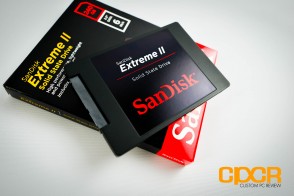 The second generation Extreme drive is no slouch and looking at our performance figures, there’s really no question that the Extreme II is positioned to play with the big boys. Not only did we see some great initial burst performance, we also saw good consistent performance, which I think is important to any top tier SSD. While the Extreme II isn’t necessarily the fastest drive on the market, it’s kind of in that “fast enough” zone where it would be difficult for most end users to tell between say the Extreme II, the OCZ Vector, or the Samsung 840 Pro in typical usage scenarios.
The second generation Extreme drive is no slouch and looking at our performance figures, there’s really no question that the Extreme II is positioned to play with the big boys. Not only did we see some great initial burst performance, we also saw good consistent performance, which I think is important to any top tier SSD. While the Extreme II isn’t necessarily the fastest drive on the market, it’s kind of in that “fast enough” zone where it would be difficult for most end users to tell between say the Extreme II, the OCZ Vector, or the Samsung 840 Pro in typical usage scenarios.
Power consumption for the Extreme II has been optimized since the original Extreme which is a welcome change. Idle power consumption is now inching closer than ever to what the Samsung drives have been capable of for a while, which is nice since low power has pretty much been a Samsung show for so long. Those looking at an Extreme II for mobile applications will find that either the Extreme II, Samsung drives, or SandForce drives will be the best bet for maximizing battery life.
| Manufacturer | SanDisk | SanDisk | SanDisk |
|---|---|---|---|
| Model | Extreme II | Extreme II | Extreme II |
| Capacity | 120 GB | 240 GB | 480 GB |
| Street Price | $136.99 | $229.99 | $442.49 |
| Price/GB | $1.14 | $0.96 | $0.92 |
| Check Price | Click Here | Click Here | Click Here |
Pricing on the SanDisk Extreme II 240GB is currently $229.99 (Amazon), which translates to about $0.96/GB. This makes the SanDisk Extreme II a bit more expensive in the face of competitors such as the Kingston HyperX 3K 240GB going for $0.75/GB, the Samsung 840 Pro 256GB going for $0.88/GB, and the Samsung 840 EVO 250GB going for just $0.72/GB. This is a far cry from the original SanDisk Extreme that was going for as low as $0.69/GB prior to SanDisk discontinuing it in favor of the Extreme II. That said, SanDisk is tacking a full 5 year warranty on their new drive as opposed to the 3 year warranty that came with the original Extreme giving the Extreme II a much larger value proposition than the original.
Unfortunately these days we’re kind of stuck in terms of SSD innovation. SSDs have mostly already reached their peaks in performance and short of a mass adoption of the faster SATA Express or PCIe standard, there’s really nothing faster controllers or faster NAND can do. SandForce seems to have realized that early on which is why we simply haven’t heard much from the company since 2011 and Samsung seems to have realized that as they decided to keep the aging Samsung 840 Pro as their flagship SSD this year, instead revamping the budget oriented Samsung 840 for better performance. SanDisk’s latest introduction this time around does have a bit to offer (and its development probably even gave SanDisk a great deal of experience in working with newer controller technology), but in the grand scheme of things I feel like it’s not all that groundbreaking of an upgrade to the original Extreme.
That said, is the SanDisk Extreme II a good product? Sure it is. In fact, I feel like the SanDisk Extreme II is among the top tier drives out there. It has great performance, a great track record, semi-competitive pricing and a 5 year warranty to back it all up – something that meets the gold standard in my book. With a bigger marketing push and a price closer to what the original SanDisk Extreme was selling for, I wouldn’t be surprised to see a lot more of these new SSDs fly off the shelves.
Sample provided by: SanDisk
Available at: Amazon

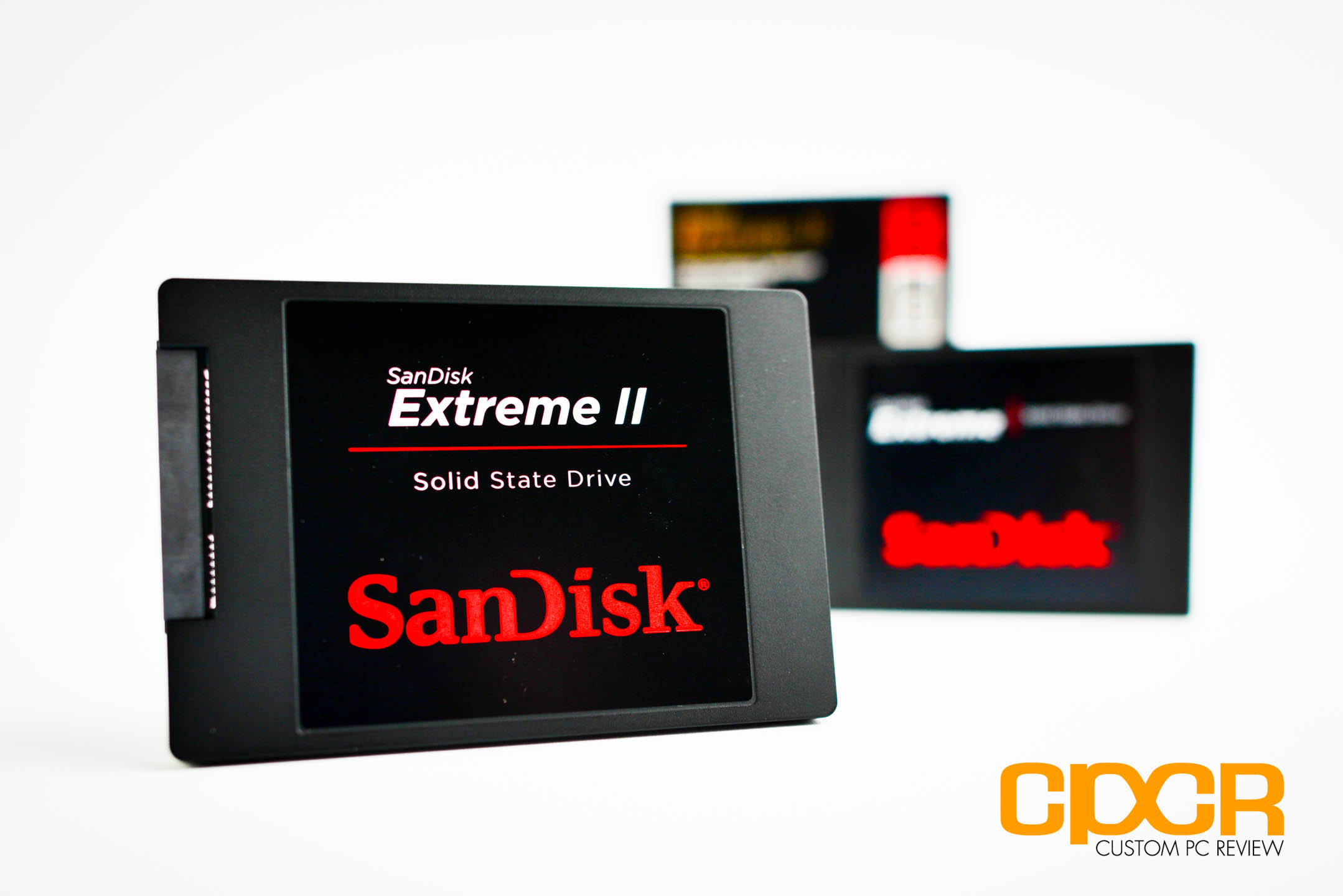
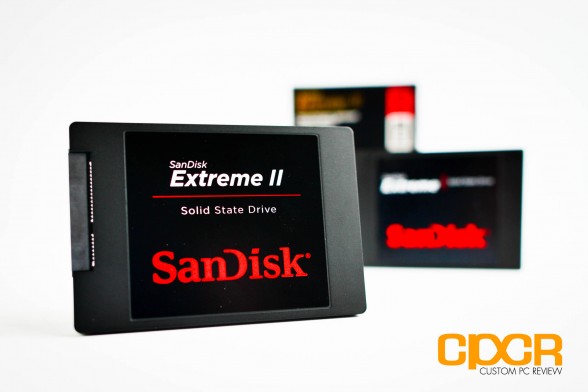
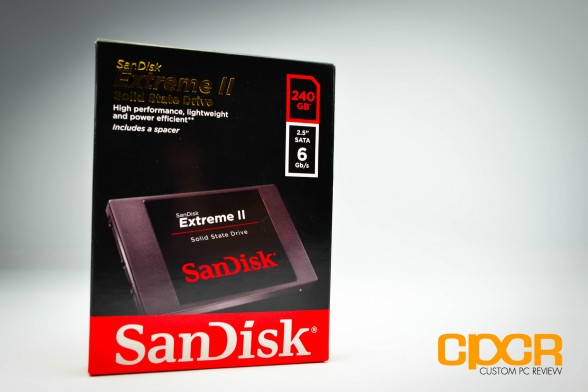
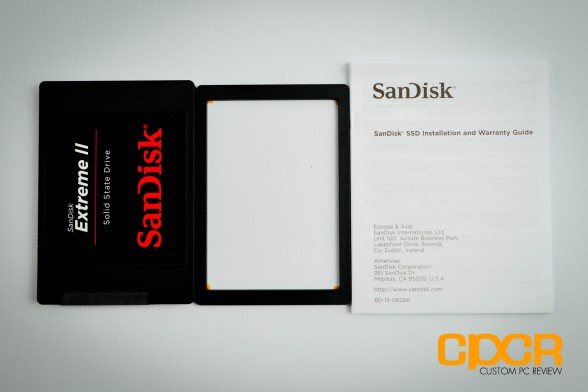
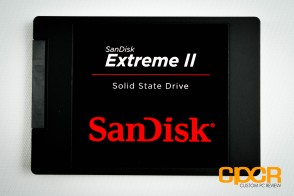
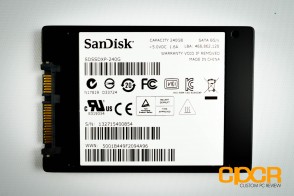
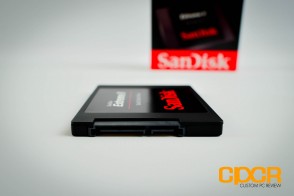
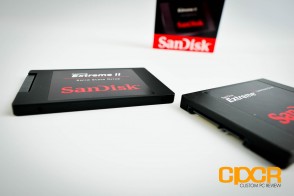
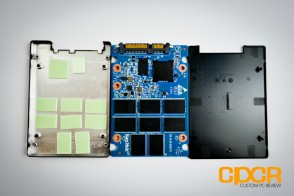

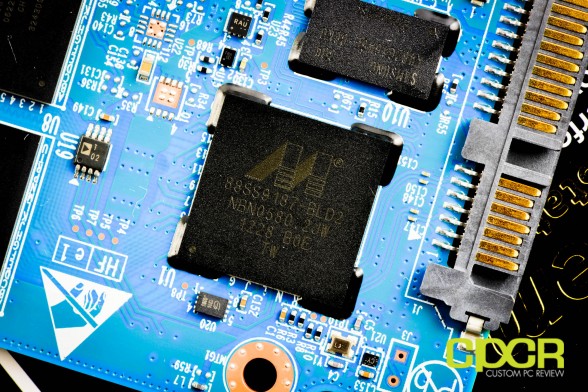
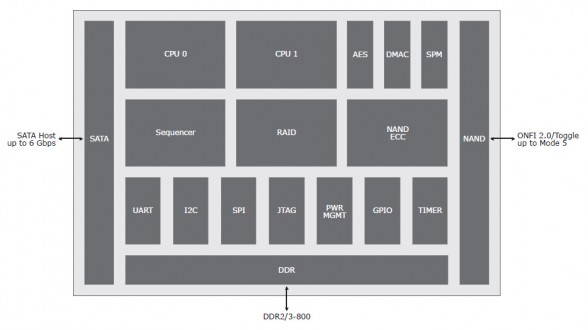
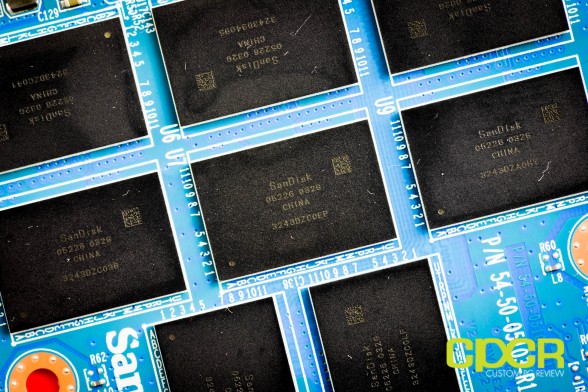
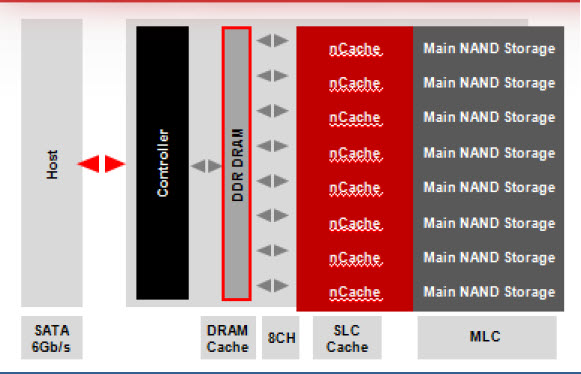
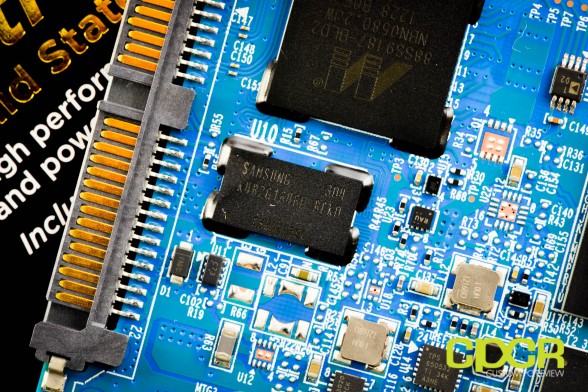
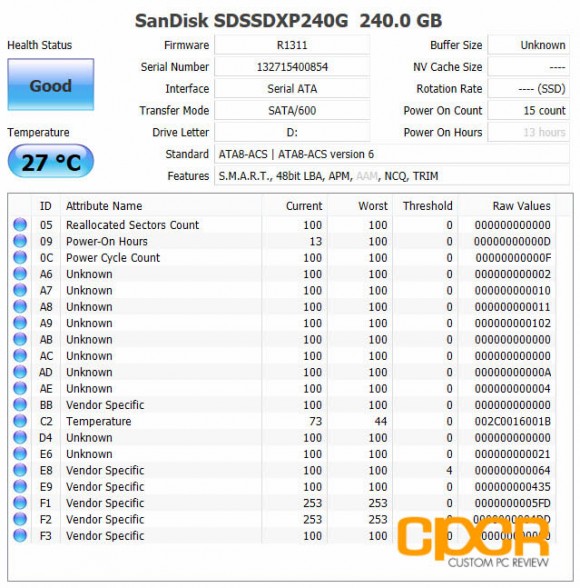
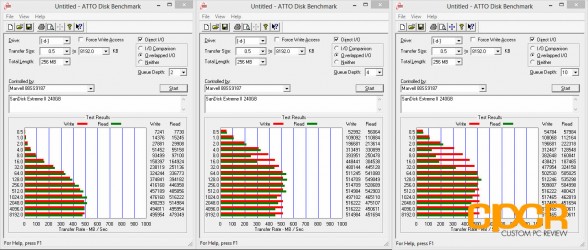
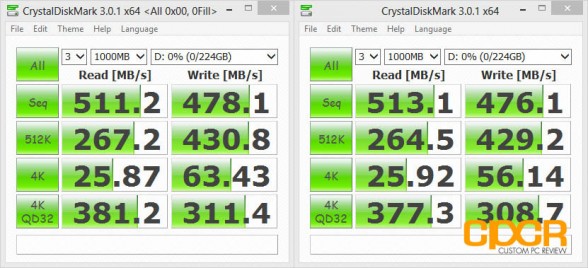
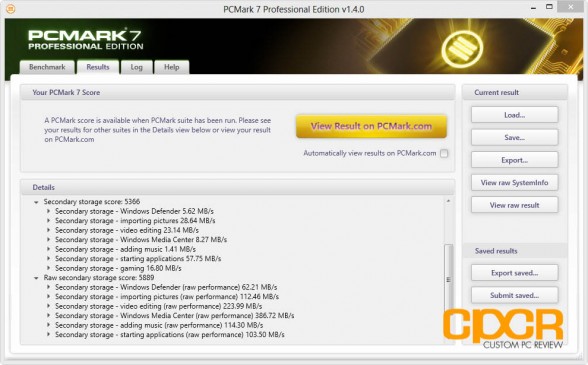
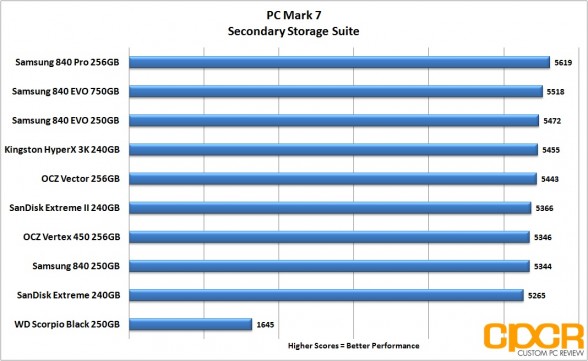
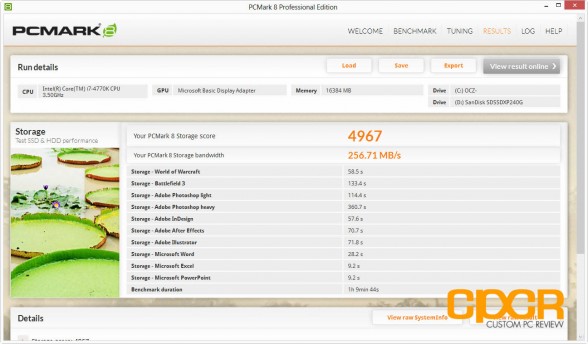
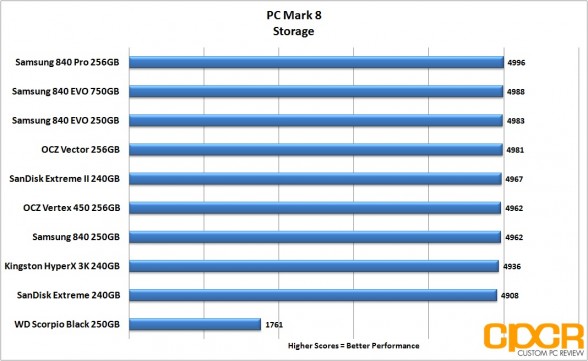
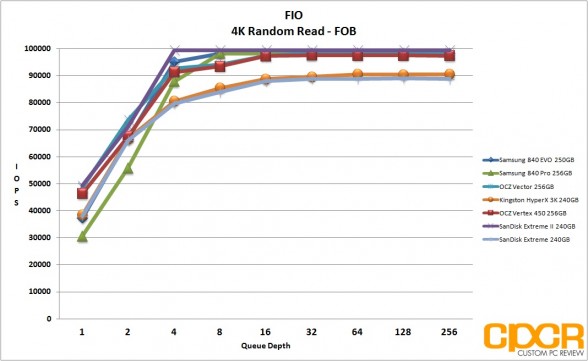
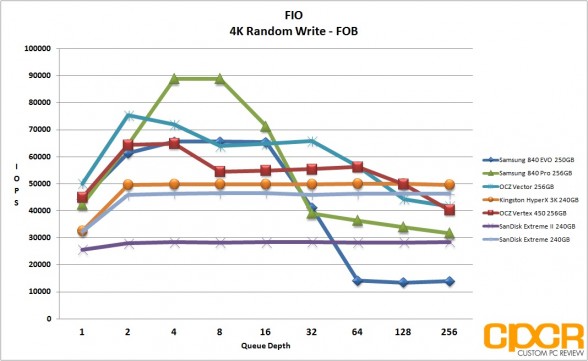
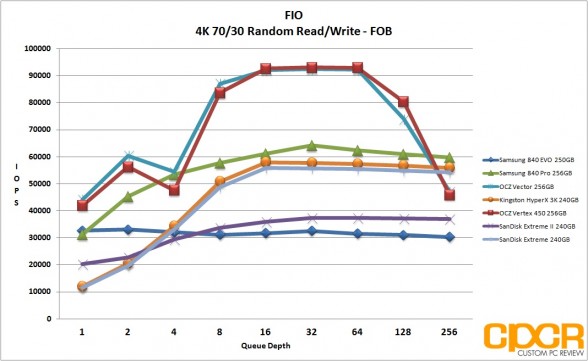
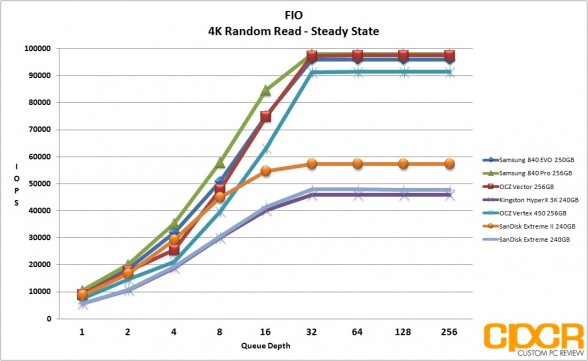
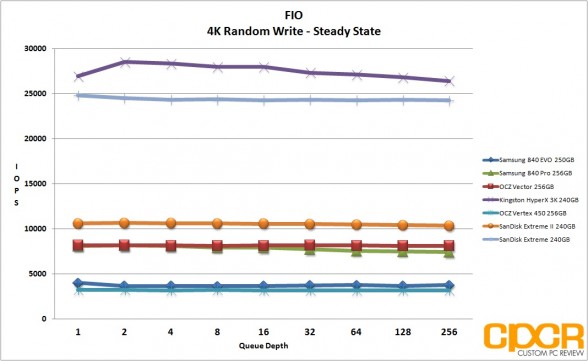
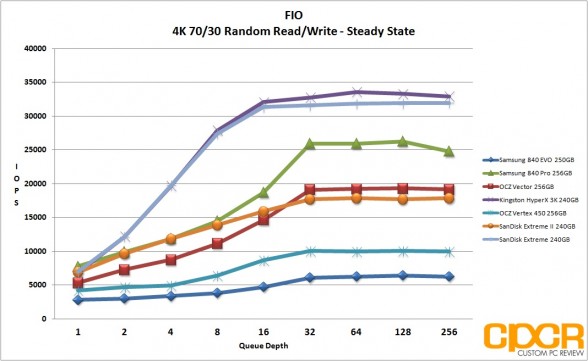
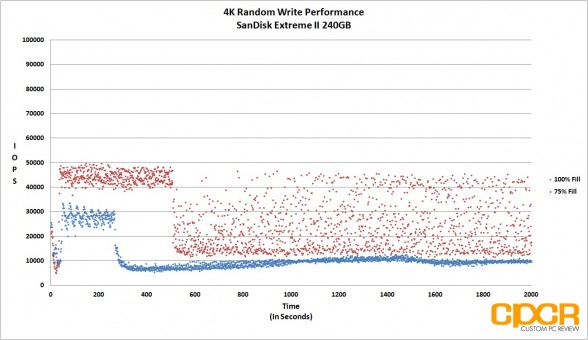
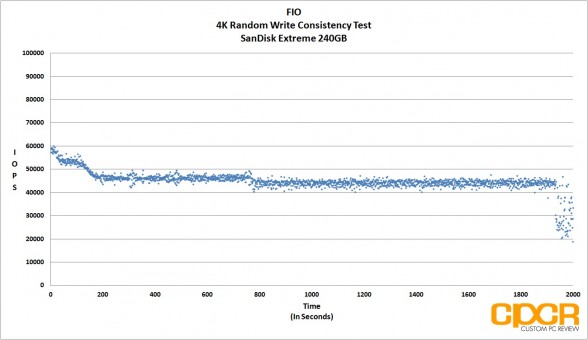
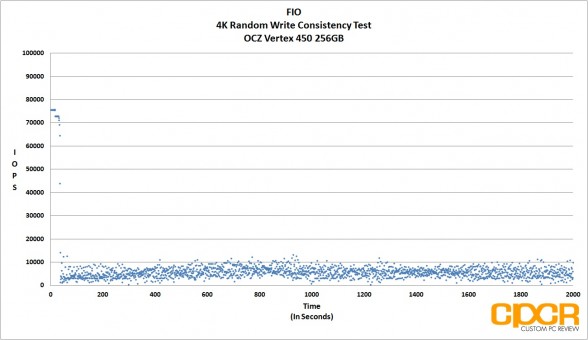
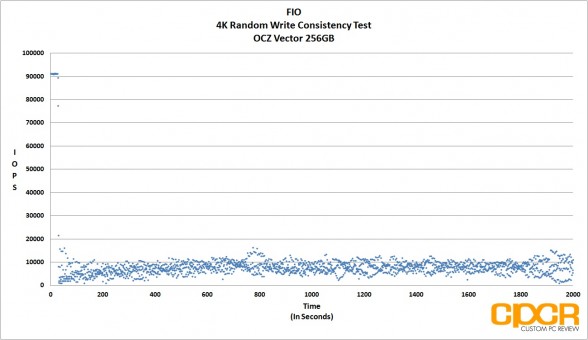
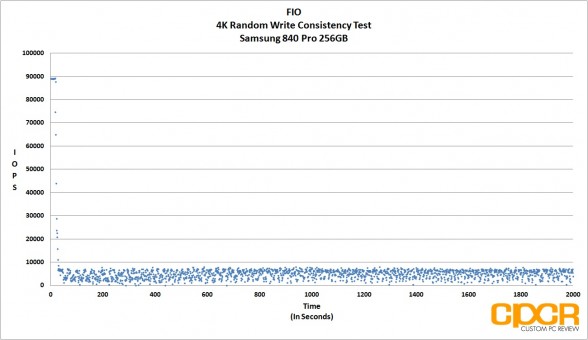
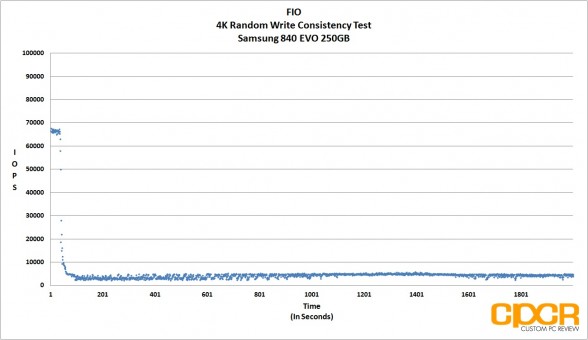
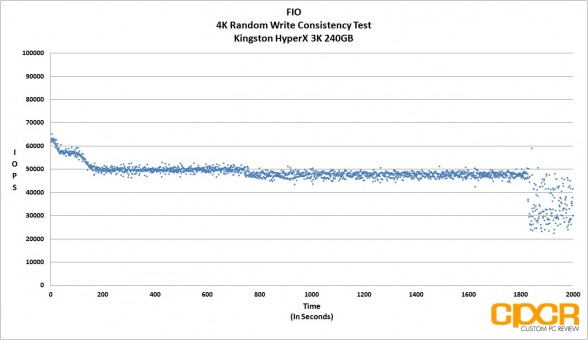
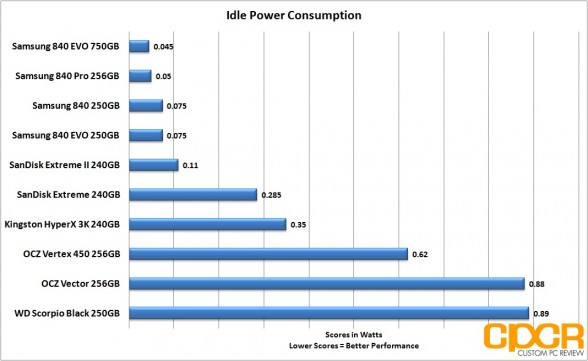
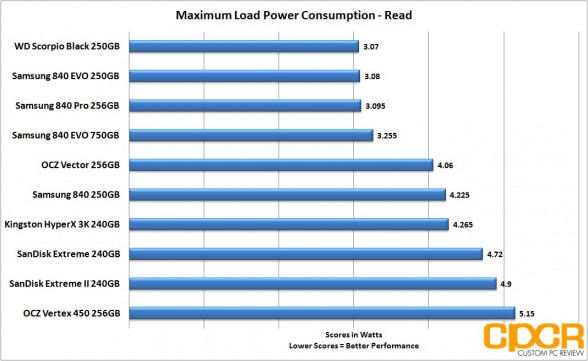
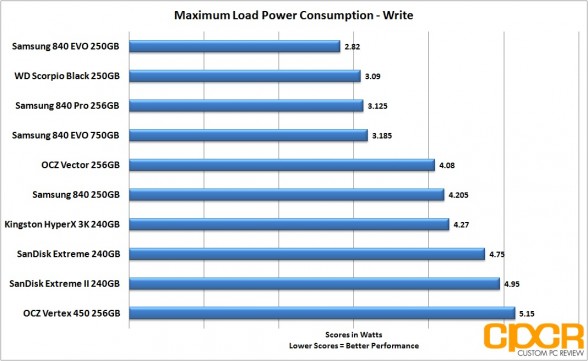

![LifeProof iPhone Case Review [iPhone 4 / 4S]](https://www.custompcreview.com/wp-content/uploads/2012/02/lifeproof-iphone-case-review-7.jpg)
